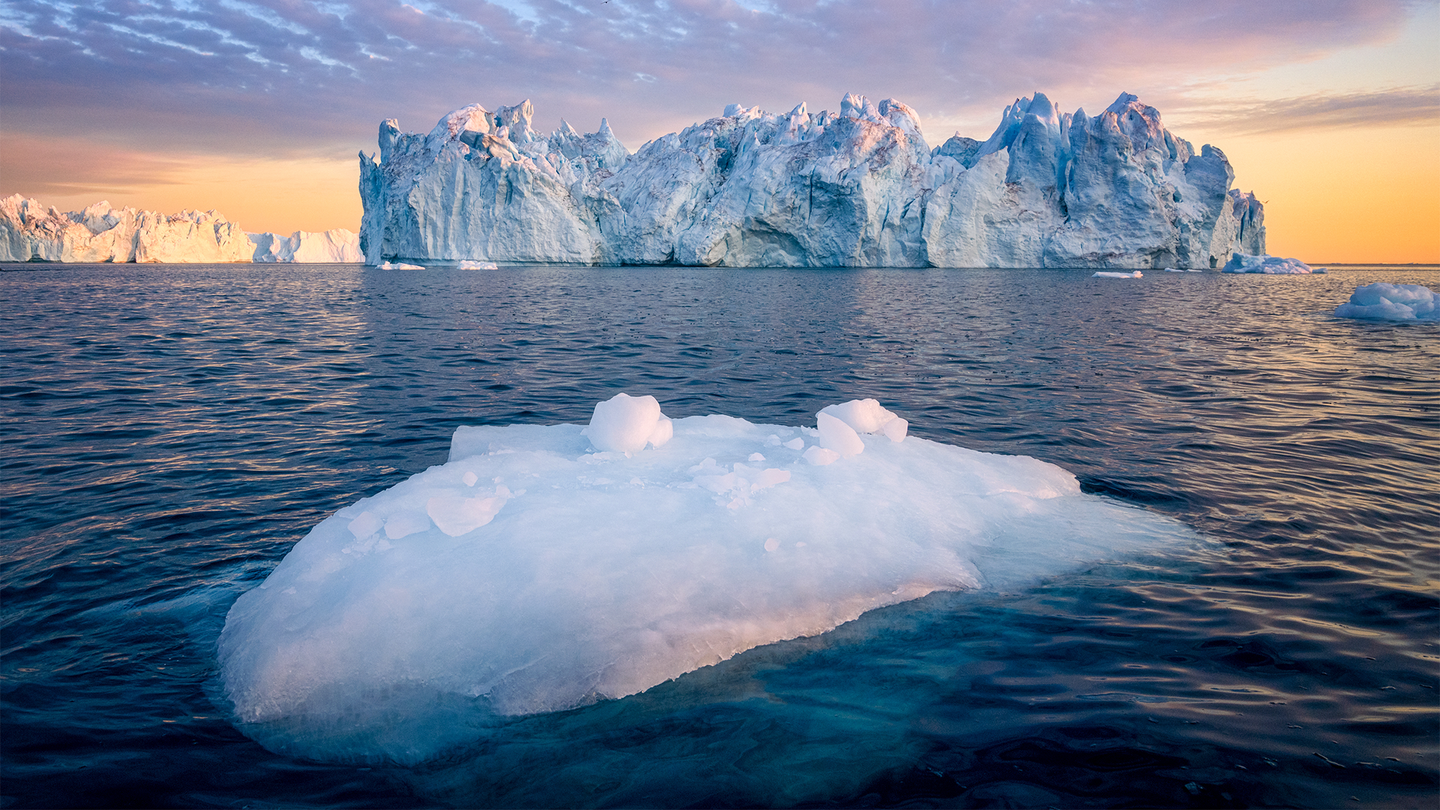
As recently as 400,000 years ago, parts of Greenland were actually quite green. New analysis of some core samples taken from underneath Greenland’s ice sheet reveal that the island was ice-free at a time in Earth’s history when temperatures were similar to what the Earth is approaching now thanks to human-caused climate change. The findings were published July 20 in the journal Science, and may indicate some disastrous implications of future sea level rise.
[Related: Greenland’s polar bears are learning to get around in a less icy world.]
“We’re discovering the ice sheet is much more sensitive to climate change than we previously thought,” study co-author and Utah State University geoscientist Tammy Rittenour said in a statement. “This is a foreboding wake-up call.”
Greenland’s continental glacier covers about 80 percent of the 836,3000-square-mile land mass, and this new analysis overturns some previous assumptions that the majority of the glacier has been frozen for millions of years. A less icy and greener Greenland indicates that the ice sheet is not necessarily as stable as it appears.
“We had always assumed the ice sheet has remained about the same for nearly 2.5 million years,” said Rittenour. “But our investigation indicates it melted enough to allow the growth of moss, shrubs and buzzing insects during an interglacial period called Marine Isotope Stage 11, between 424,000 to 374,000 years ago.”
Rittenour added that the melting caused at least five feet of sea level rise worldwide. Some of the models in the study suggest that sea levels could have been up to 30 feet higher than we see today. The Marine Isotope Stage 11 was an unusually long period of warming with slightly elevated levels of carbon dioxide in the atmosphere. However, today’s CO2 levels are 1.5 times higher than they were 400,000 years ago and at least 50 percent higher than pre-industrial levels.
These inflated levels of carbon dioxide would remain in place for hundreds, even thousands, of years—even if humans ceased all greenhouse gas emissions, according to Rittenour. Sea levels would rise about 23 feet if Greenland’s entire ice sheet were to melt completely. The measurements also do not take melting in Antarctica into consideration, which is also happening at a rate 20 times faster than scientists previously thought.
“The deglaciation has implications for the entire globe and is especially sobering for our coastal mega-cities, where so much of the world’s population resides,” said Rittenour.
The study used frozen sediment from an ice core that was collected during a Cold War-era military project in 1966 at a US army base in northwestern Greenland.
[Related: Climate change revealed this U.S. military secret.]
“In 1960, the US Army launched a top-secret effort called Project Iceworm in northwestern Greenland to build a network of mobile nuclear launch sites under the ice sheet,” Rittenour said. “As part of that project, they also invited scientists and engineers to conduct experiments in a highly publicized ‘cover’ project, known as Camp Century, to study the feasibility of working and carrying out military missions under ice and in extreme-cold conditions.”
The 12-foot-long rock and soil sample was retrieved after scientists drilled through more than 4,500 feet of ice from beneath the ice sheet. The core sat untouched in a freezer until 2017 since there weren’t techniques to understand the sediment when the core was unearthed almost 60 years ago.
Since the samples had remained frozen and relatively unbothered, the team could use luminescence dating to determine the last time they had been exposed to sunlight.
According to the study, the cores and new analysis add a sobering and “upsetting” warning of what our planet could be heading towards.
The post Greenland’s ice sheets aren’t as old—or as resilient—as scientists expected appeared first on Popular Science.
Articles may contain affiliate links which enable us to share in the revenue of any purchases made.
from | Popular Science https://ift.tt/xfAY1uC



0 Comments